
| The Skin or ("Hey! Your epidermis is showing!") |
 |
Hey! Your epidermis is showing! What is the epidermis, anyway? The epidermis is the outside layer of your skin. The dermis is the inside layer of skin. The skin, all 6-10 lb. (~3-4 kg) and 20 square feet in an adult, is a giant, washable, stretchable, tough, water-proof sensory apparatus covering your whole body. It keeps your insides in! |
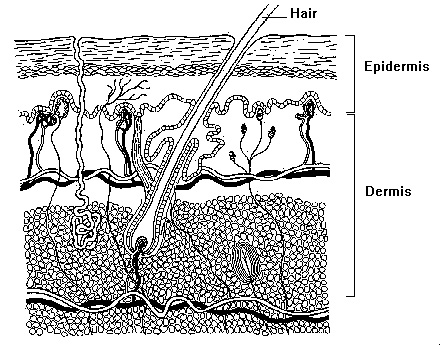 |
Actually, there are four different types of skin:
Glabrous skin has an epidermal layer of about 1.5 mm in thickness and a dermis of about 3 mm. Hairy skin has an epidermal layer of 0.07 mm in thickness and a dermis of about 1-2 mm. |
| Skin Receptors | |||
| Receptor Ending | Nerve Fiber | Function | Location |
|---|---|---|---|
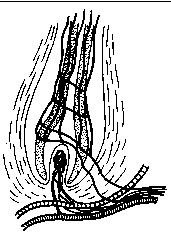 Hair Follicle Ending | A-beta | Responds to hair displacement. | Wraps around hair follicle in, of course, hairy skin. |
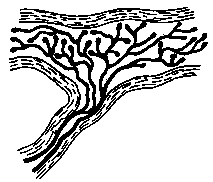 Ruffini Endings | A-beta | Responds to pressure on skin. | Dermis of both hairy and glabrous skin. |
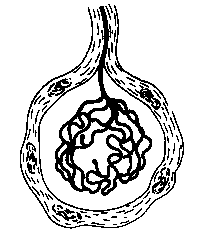 Krause corpuscle | A-beta | Responds to pressure. | Lips, tongue, and genitals. |
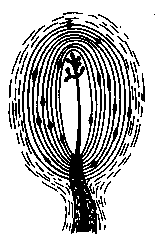 Pacinian corpuscle |
A-beta | Responds to vibration. Most sensitive in 150-300 Hz range | Deep layers of dermis in both hairy and glabrous skin. |
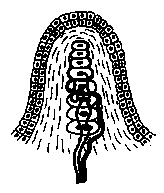 Meissner corpuscle |
A-beta | Responds to vibration. Most sensitive in 20-40 Hz range | Dermis of glabrous skin. |
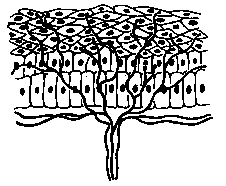 Free nerve endings | A-delta and C | Different types of free nerve endings that respond to mechanical, thermal or noxious stimulation. | Various types are found throughout the skin. |
| Merkel Cells | A-beta | Responds to pressure of the skin. | Epidermis of glabrous skin. |
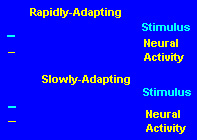 | Nerve fibers that are attached to different types of skin receptors either continue to discharge during a stimulus ("slowly-adapting") or respond only when the stimulus starts and sometimes when a stimulus ends ("rapidly-adapting"). In other words, slowly-adapting nerve fibers send information about ongoing stimulation; rapidly-adapting nerve fibers send information related to changing stimuli. The Pacinian corpuscle receptor is a classic example of a rapidly-adapting type receptor. The Ruffini nerve ending is a slowly-adapting type receptor. |
Did you know? |
|
Try it! |
Play the Interactive Word Search Game on Touch. |
|
Links of interest:
|

| BACK TO: | Exploring the Nervous System | Table of Contents |
![[email]](./gif/menue.gif) Send E-mail |
 Get Newsletter |
 Search Pages |
 Donate to Neuroscience for Kids |